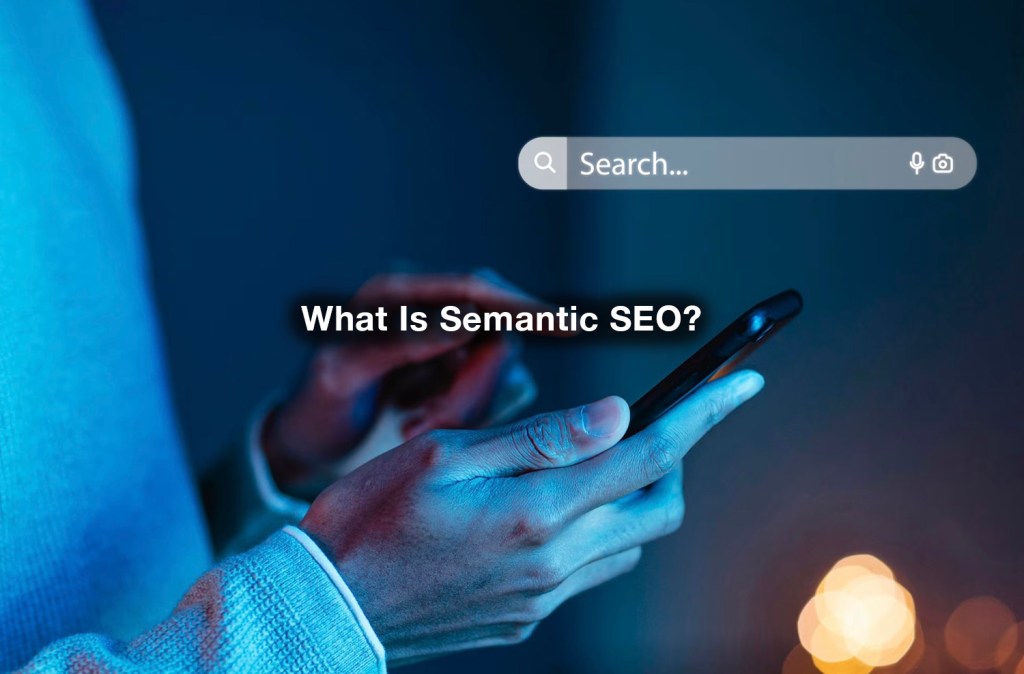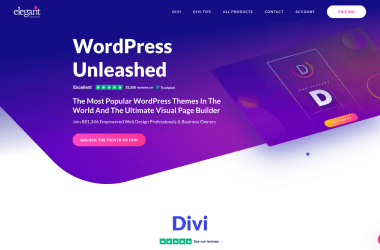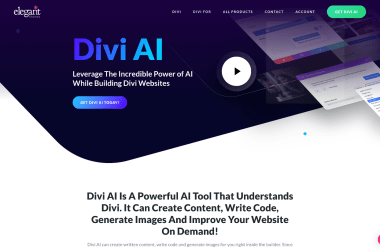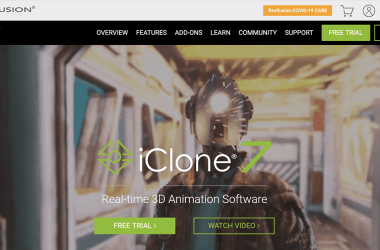Updated: Sep 19, 2023 By: Dessign Team

In the ever-evolving world of search engine optimization (SEO), one significant shift has been the focus on understanding the intent behind search queries and the context in which they're made. This approach, called Semantic SEO, goes beyond traditional keyword matching to provide more accurate and relevant search results.
It utilizes the principles of semantics, a branch of linguistics that deals with the study of meaning, to better understand and interpret user queries and generate search engine results pages (SERPs) that closely align with the goals and needs of the searcher.
The main advantage of Semantic SEO is that it moves away from the archaic practice of stuffing keywords into content in hopes of ranking higher. In adapting to the changing search landscape, Semantic SEO allows businesses and content creators to connect with their target audience more effectively by producing high-quality content that revolves around topics, not just individual keywords.
With search engines like Google now prioritizing context and meaning, creating optimized content involves understanding core concepts and answering searcher intent, which helps improve ranking and visibility online.
Key Takeaways
- Semantic SEO focuses on the meaning behind search queries and user intent, moving away from traditional keyword matching.
- Implementing Semantic SEO involves creating high-quality content that revolves around topics and addresses searcher intent for improved ranking and visibility.
- The shift to Semantic SEO allows content creators to better connect with their target audience by prioritizing context and meaning in search engine results.
Understanding Semantic SEO
Semantic SEO is the practice of optimizing content around topics, rather than focusing solely on individual keywords. This approach takes into consideration the relationships between words and concepts, allowing search engines like Google to understand and process content in a more human-like manner.
In the past, search engines relied heavily on keyword matching to determine the relevancy of a website's content. However, with the introduction of semantic search, the focus has shifted to understanding searcher intent and the context of search queries. Semantic search is an information retrieval process that goes beyond traditional keyword matching and delves into the meanings behind search queries.
The concept of semantics originates from a branch of linguistics concerned with the study of meaning. In the context of SEO, semantics plays a crucial role in helping search engines return the most accurate and relevant results possible. Semantic SEO builds upon this idea by creating content that caters to a user's intent and provides a comprehensive answer to their query.
To implement effective semantic SEO, it is important to consider various factors, such as the use of related keywords, synonyms, and long-tail keyword phrases that help search engines better understand the content's topical focus. This approach, combined with creating high-quality and user-focused content, increases the likelihood of ranking higher on search engine results pages (SERPs).
In conclusion, understanding and leveraging semantic SEO is essential for modern-day digital marketers and website owners. By focusing on the context and meaning behind search queries, it is possible to create content that not only satisfies the needs of users but also aligns with the evolving capabilities of search engines like Google. Incorporating semantic SEO techniques allows for improved organic search rankings, increased visibility, and ultimately, a better user experience.
The Role of Algorithms
Hummingbird and Rankbrain
Hummingbird is a Google algorithm update that was introduced in 2013, marking the beginning of the semantic search era. It uses natural language processing (NLP) to better understand user queries and provide more relevant search results. Rankbrain, another important Google algorithm, leverages artificial intelligence and machine learning to further improve search results by analyzing large amounts of data.
Both algorithms have made significant strides in understanding user intent and query context, allowing for more accurate search results. By harnessing the power of AI and machine learning, Google has been able to continue refining its search algorithms, leading to a better overall user experience.
BERT and NLP
In 2019, Google introduced the BERT algorithm, which stands for Bidirectional Encoder Representations from Transformers. BERT has been a game-changer for SEO, as it uses advanced NLP techniques to better understand the context of words within a search query, ensuring more relevant search results. BERT is especially helpful with understanding longer or more complex search queries, where traditional keyword-focused SEO might struggle.
Natural language processing (NLP) plays a crucial role in the evolution of semantic SEO. NLP enables algorithms like Hummingbird, Rankbrain, and BERT to analyze and interpret content in a more humanistic manner. As a result, search engines have become more efficient at understanding user intent, query context, and the relationships between words, ultimately leading to more accurate search results.
In conclusion, algorithms like Hummingbird, Rankbrain, and BERT have revolutionized the world of SEO by implementing advanced NLP and artificial intelligence techniques. These algorithms have made search engines more sophisticated, paving the way for better search results and an overall enhanced user experience.
Importance of User Intent
User intent, sometimes referred to as searcher intent or search intent, is the goal behind a user's search query—what they are trying to find or achieve. Understanding user intent is crucial for successful semantic SEO. When search engines accurately comprehend the intent behind search queries, they can provide more relevant and precise results, ultimately enhancing user experience.
One primary reason why user intent is important is due to its direct influence on ranking for chosen keywords. To rank high for any keyword, content creators must grasp the user intent associated with that keyword. Without understanding user intent, it becomes challenging to create content that aligns with what users are looking for.
Another reason is that search engines, like Google, continuously improve their algorithms to better understand search intent and deliver the most relevant results. Focusing on user intent can help content creators keep up with these evolving algorithms and stay competitive in search engine rankings.
Additionally, addressing user intent in content can improve user engagement metrics, such as click-through rates, time on page, and bounce rates. When users find content that fulfills their intent, they are more likely to explore the website further, ultimately boosting brand visibility and authority.
In summary, understanding user intent is essential for semantic SEO as it allows content creators to align their content with users' needs, keeps up with evolving search algorithms, and improves user engagement metrics.
Keyword Research and Usage
In the world of Semantic SEO, keyword research plays a crucial role. It involves identifying the most relevant and highly searched keywords that relate to a particular topic or niche. This process helps in optimizing content to rank higher on search engine result pages (SERPs).
Keyword matching plays a significant part in this process. It focuses on aligning the content with user intent by using keywords that are semantically related. It is important to understand the difference between exact-match and semantic keywords as the former targets specific words, while the latter targets related concepts and phrases.
Latent Semantic Indexing (LSI) is another vital aspect to cover. LSI keywords are semantically related keywords that help search engines determine the context and relevance of a piece of content. These keywords can improve content visibility and ultimately result in better rankings on SERPs.
Semantically related keywords are a vital component for optimizing content in Semantic SEO, as they help search engines understand the context of the content better. They refer to words and phrases that share a similar theme or idea with the main keyword. Identifying these keywords can lead to better content optimization and improved search engine rankings.
Latent Semantic Indexing (LSI) is a technique used by search engines to analyze the relationship between keywords and their contextual meaning. LSI allows search engines to understand the true meaning of a piece of content by considering the semantic relationships between words and phrases. This helps in delivering more accurate search results to users.
Keyword clusters are groups of related keywords that can be used within a piece of content. Implementing keyword clusters is an effective way to increase content relevance and visibility. By incorporating keyword clusters, content creators can improve the targeting of their content and create a better user experience for their audience.
In conclusion, effective keyword research and usage in Semantic SEO requires thorough analysis and understanding of related concepts such as keyword matching, LSI keywords, semantically related keywords, latent semantic indexing (LSI), and keyword clusters. A confident, knowledgeable, and clear approach to Semantic SEO will result in improved search engine ranking and increased visibility of content.
Structured Data and Semantic HTML
Website Structure
A website's structure plays a crucial role in both user experience and search engine optimization (SEO). Structured data and semantic HTML are two key components in creating an organized and easy-to-crawl website. Structured data is a standardized format for providing information about a page and classifying its content. It helps search engines understand the meaning and context of the webpage, which can improve search rankings and appearance in search results.
Semantic HTML enhances the meaning of a webpage by using specific HTML tags that signify the purpose of different elements on the page. This also helps search engines understand the structure and content of the website better, resulting in improved SEO performance.
HTML Tags and Uses
Semantic HTML tags, such as <header>, <main>, and <footer>, are used to represent different sections on a page and are more descriptive than generic <div> tags. Some commonly used semantic HTML tags include:
<header>: Represents the header section of the page, usually containing the website logo, navigation, and potentially other important content<nav>: Contains a website's primary navigation menu, often comprised of links to different sections or pages on the site<main>: Contains the main content of the page, appropriately excluding header, footer, and navigation elements<aside>: Used for content that is tangentially related to the main content, such as sidebars and advertisements<footer>: Represents the footer section of the page, typically containing copyright information, contact details, and additional navigation
Incorporating semantic HTML tags in a website's structure facilitates improved accessibility, as it allows assistive technology (such as screen readers) to better understand the layout and relationship of various elements on the webpage.
Additionally, structured data can be implemented in various formats, including JSON-LD, Microdata, and RDFa. By incorporating structured data, developers can provide additional context for search engines, improving the likelihood of displaying rich snippets or other enhanced search results. Some common types of structured data include:
- Product information
- Events
- Recipes
- Reviews
- Articles
In conclusion, employing both structured data and semantic HTML in a website's design and development can significantly improve its overall structure, accessibility, and SEO performance.
Content Creation Techniques
Crafting high-quality content that incorporates Semantic SEO is essential for improving search engine rankings and providing value to users. A key aspect of content creation is ensuring it is topically relevant, engaging, and easy to read.
One effective technique for creating Semantic SEO content is focusing on the user's intent rather than simply targeting specific keywords. This approach requires an understanding of what the user is looking to accomplish through their search query. To do this, perform thorough research and cover various aspects of the topic to address the users' questions fully and provide comprehensive information.
An essential part of producing topically relevant content is using semantically related phrases and words. Including these keywords will help search engines understand the context of the content and improve its visibility. Enhancing content with related terms will also emphasize the topic's importance and add depth to the article, making it more appealing to users.
In addition to incorporating relevant phrases, maintaining high readability is crucial for creating quality content. Break up the text into short paragraphs, use subheadings, and employ bullet points or tables where appropriate. This improves the content's structure, making it easier for users to navigate and understand the information presented.
Focusing on conversations can also enhance the quality of content. By considering and addressing the common questions and discussions users have about the topic, the content becomes more valuable and comprehensive. This also relates to the Semantic SEO concept, as it helps the content establish connections between topics and terms.
Ultimately, embracing Semantic SEO in content creation requires a thoughtful approach that prioritizes the users' needs and intent. By producing high-quality, topically relevant pieces filled with related words and phrases, and maintaining readability, content creators can improve their search engine rankings and better serve their audience.
Ranking Factors for Semantic SEO
User Experience
User experience (UX) plays a crucial role in semantic SEO. Search engines prioritize content that addresses user intent, focusing on providing meaningful results that satisfy users' needs. By crafting content that matches the context of user queries, you increase your chances of securing higher rankings. Enhancing the overall user experience includes factors such as site speed, easy navigation, and mobile-friendliness.
Backlinks
Backlinks remain an essential ranking factor in semantic SEO. High-quality and contextually relevant backlinks signal to search engines that your content is valuable and credible. This boosts your website's authority and helps achieve better rankings. Focus on obtaining backlinks from authoritative and relevant sources to improve your site's standing in the eyes of search engines.
Image Optimization
Optimizing images is another important aspect of semantic SEO. Properly optimized images can improve both user experience and search engine rankings. To achieve this, ensure that your images have descriptive file names and alt tags to provide context to search engines and improve accessibility.
Additionally, compress image file sizes to reduce loading time and improve site speed, contributing to a better UX. By paying attention to these three aspects of semantic SEO, your content can rank higher and become more visible to users searching for relevant information.
Optimizing for Voice Search
Voice search has become increasingly popular with the rise of virtual assistants like Google Assistant, Siri, and Alexa, especially on smartphones. As a result, optimizing your content for voice search is essential for staying competitive in modern Semantic SEO strategies. In this section, we'll discuss several key tactics to optimize your website for voice search.
Firstly, it's crucial to target long-tail keywords and conversational phrases. Voice search queries are often longer and more natural-sounding than text-based searches. Incorporating these conversational phrases in your content will help search engines and virtual assistants understand and prioritize your content in voice search results.
Another vital aspect of voice search optimization is ensuring that your website loads quickly. Users on smartphones and other devices expect fast page load times, and voice search results prioritize websites with better performance. To optimize your site's load time, consider compressing images, optimizing your server response time, and minimizing the use of render-blocking resources.
Optimizing your website for local search is also essential, as many voice search queries are location-based. Ensure that your site includes accurate and up-to-date contact information and location details. Connecting your site to Google My Business, for example, will help Google Assistant provide accurate local search results for your business.
Structured data is another critical component for voice search optimization. Rich snippets and schema markup help search engines like Google understand your content better and can lead to improved search rankings. Implementing structured data in your website's code can provide valuable context, enabling voice assistants to answer users' queries more accurately.
Finally, consider optimizing your website's content to provide clear, concise answers to user questions. Voice search users are typically seeking specific information, so it's crucial to break down complex topics into easily digestible pieces. Writing in a question-and-answer format using clear language can enhance the user experience and increase the likelihood of appearing in voice search results.
In conclusion, by addressing these tactics, you can effectively optimize your website for voice search and improve your Semantic SEO strategy, making your content more accessible to users of virtual assistants like Google Assistant on smartphones and other devices.
Capitalizing on SERPs
Featured Snippets
Featured snippets are an excellent way to capitalize on SERPs and improve your semantic SEO efforts. These snippets are selected search results that aim to answer the user's query directly within the SERP. To optimize your content for featured snippets, ensure that it clearly answers common questions and covers the entities mentioned.
Use concise, informative paragraphs, bullet points, or tables to present information in a structured and easily accessible manner. Remember that, while being brief and clear, also try to demonstrate your expertise on the topic to increase the chances of being featured.
People Also Ask Box
The People Also Ask (PAA) box is another element in SERPs that provides an opportunity to enhance your semantic SEO strategy. PAA displays related questions that users often ask alongside their initial query, helping search engine algorithms identify and understand the context of the content. To optimize for the PAA box, research common or related questions within your niche and incorporate them into your content. Using a clear, knowledgeable tone will help establish your authority in the eyes of search engines and users alike.
Knowledge Graph
The Knowledge Graph is a semantic search tool that helps search engines understand the connections between various entities, including your content and other online resources. By optimizing your content for the Knowledge Graph, you increase your chances of being recognized as an authoritative and relevant source within SERPs. To achieve this, focus on well-structured content that showcases clear connections between the entities mentioned. Provide context and use accurate terminology, while maintaining a neutral and confident tone. This approach will ensure that search engines can easily recognize the value of your content and improve its chances of ranking higher in SERPs.
Semantic SEO in Various Sectors
E-commerce
Semantic SEO plays a crucial role in the e-commerce sector by improving the visibility of product pages and category pages in search results. By leveraging semantic analysis, search engines can understand the context and intent behind search queries, allowing them to display relevant results for users.
For ecommerce websites, it's essential to optimize different aspects of product and category pages to align them with semantic search principles. This includes:
- Crafting meaningful and informative product descriptions that cover key features and benefits of the products
- Including semantically relevant keywords in the title, description, and URL structure
- Creating well-structured metadata to help search engines understand the relationships between various elements of the content
Applying Semantic SEO to ecommerce websites helps in enhancing the overall user experience and improving search performance.
Email Marketing
Email marketing, though different from website content, can also benefit from the application of Semantic SEO principles. By understanding the context and intent of keywords used in email campaigns, marketers can craft more targeted and relevant content.
Some of the ways Semantic SEO can be incorporated into email marketing include:
- Optimizing subject lines using natural language processing to scope relevant keywords and phrases that capture users' attention
- Analyzing the content of past email campaigns to identify semantic gaps and opportunities for improvement
- Ensuring that the body of the email is contextually relevant to the subject line and the target audience
Incorporating Semantic SEO principles into email marketing efforts contributes to enhanced user engagement and better click-through rates. By understanding the semantic associations between different elements, marketers can create more relevant and effective email campaigns.
SEO Tools and Strategies
Semantic SEO focuses on understanding and optimizing content around topics rather than just keywords. This approach is essential for adapting to ever-evolving search engine algorithms and keeping up with user search behavior. In this section, we will cover a few SEO tools and strategies for implementing semantic SEO effectively.
Keyword Research and Semantically-related Terms: Begin by conducting thorough keyword research using tools such as SEMrush. Once you identify your primary keywords, explore related terms and phrases that share similar meanings or fall under the same topic umbrella. Incorporating these semantic keywords will help search engines better understand your content and provide more accurate search results to users.
Understanding User Intent: Analyzing user intent is crucial for shaping your semantic SEO strategy. Consider the problems your target audience is trying to solve or the information they seek when conducting their search queries. By addressing these concerns in your content, you'll create a more user-centric experience that aligns with search engine demands.
Optimizing Content Structure: Organize your content in a logical manner with headings, subheadings, bullet points, and tables to address the core topic and its associated subtopics. This structure not only improves readability but also signals to search engines the key aspects and supporting elements of your content. Be sure to use HTML header tags such as H1, H2, H3, etc., to emphasize the hierarchy of your information.
Internal and External Linking: Relevant and useful internal and external links can indicate the context of your content to search engines. Linking to authoritative sources or pages within your site that cover related topics helps search engines understand the relationships between different pieces of content.
Optimizing for Voice Search and Conversational Queries: Search behavior is increasingly shifting towards voice search and conversational queries. Optimize your content for natural-language queries by incorporating well-phrased questions and answers related to your topic. This will help search engines recognize your content as a suitable response to voice search queries.
By implementing these strategies and effectively utilizing SEO tools like SEMrush, you can enhance your semantic SEO efforts and better align your content with the evolving needs of your audience and search engine algorithms.
Semantic SEO Trends
Semantic SEO refers to the practice of optimizing web content based on the understanding of user intent, rather than solely focusing on individual keywords. This approach enables search engines to deliver more relevant and meaningful results, considering the context of the search query. The following trends have emerged as semantic search continues to evolve.
One significant trend in Semantic SEO is the shift towards topic-based content. Content creators are moving away from keyword stuffing and instead embracing comprehensive, well-researched material that thoroughly addresses the user's search query. This approach encourages the production of high-quality content that meets the needs of users and ranks higher on search engine results pages.
Another trend driving Semantic SEO is the adoption of entities and structured data markup. Entities, such as people, places, and events, are often used to improve the understanding of a web page's content. By incorporating structured data markup, like Schema.org, webmasters can provide search engines with detailed information about the entities within their content, enhancing the user experience and potentially improving search rankings.
Voice search and conversational AI have also influenced the direction of Semantic SEO. As users increasingly rely on voice assistants like Siri, Alexa, and Google Assistant, search engines must adapt to understand and deliver results based on conversational queries. This means that content creators need to consider natural language and user intent when developing content, further emphasizing the importance of context and meaning in semantic search.
In conclusion, the trends shaping Semantic SEO point towards a more user-centric and intent-based approach to content creation and optimization. By staying informed about these trends and adapting content strategies accordingly, marketers can ensure their websites remain relevant, useful, and visible in today's ever-evolving search landscape.
Frequently Asked Questions
How can semantic SEO improve search engine rankings?
Semantic SEO focuses on understanding user intent and optimizing content around topics, entities, and facts instead of individual keywords. By creating comprehensive, high-quality content that meets the needs of the intended audience, websites have a better chance of ranking higher in search engine results pages (SERPs). Furthermore, leveraging natural language processing and meeting user intent can lead to increased organic traffic, page views, and session duration.
Which tools are best for optimizing semantic SEO?
There are various tools available to optimize semantic SEO, including keyword research tools and content analysis tools that help in identifying relevant topics and entities. Some popular tools include Google's Natural Language API, WordLift, and MarketMuse. These tools can assist you in better understanding user intent, analyzing content gaps, and suggesting semantically-related keywords to include in your content strategy.
What are the key elements of semantic SEO?
The key elements of semantic SEO include understanding user intent, creating comprehensive and high-quality content around topics, focusing on entities and facts, and leveraging natural language processing. Ensuring that your content addresses the needs of your audience and provides valuable information in a clear and organized manner will help improve your website's semantic SEO.
How does Google's semantic search algorithm affect SEO?
Google's semantic search algorithm focuses on understanding the relationship between entities and concepts, as well as user intent. This shift in focus means that simply stuffing keywords into content is no longer an effective SEO strategy. Instead, content creators must focus on creating comprehensive and relevant content around specific topics, addressing search queries more accurately and holistically. This approach helps Google better understand and index the content, ultimately improving search rankings.
What is the role of structured data in semantic SEO?
Structured data plays a crucial role in semantic SEO as it helps search engines understand the context and relationships between different elements on a webpage. By using structured data markup, such as schema.org, content creators can provide additional information about the entities and facts within their content. This helps search engines to better index the content and display it more accurately in SERPs, leading to improved visibility and higher rankings.
How can semantic keywords enhance content strategy?
Semantic keywords refer to contextually-related or synonymously-associated words that help search engines understand the overall topic of your content. Integrating semantic keywords into your content strategy can improve the comprehensiveness and relevance of your content, making it more appealing to both users and search engines. By focusing on topics rather than just individual keywords, content creators can craft a more robust and effective content strategy that caters to the evolving landscape of search engine optimization.








